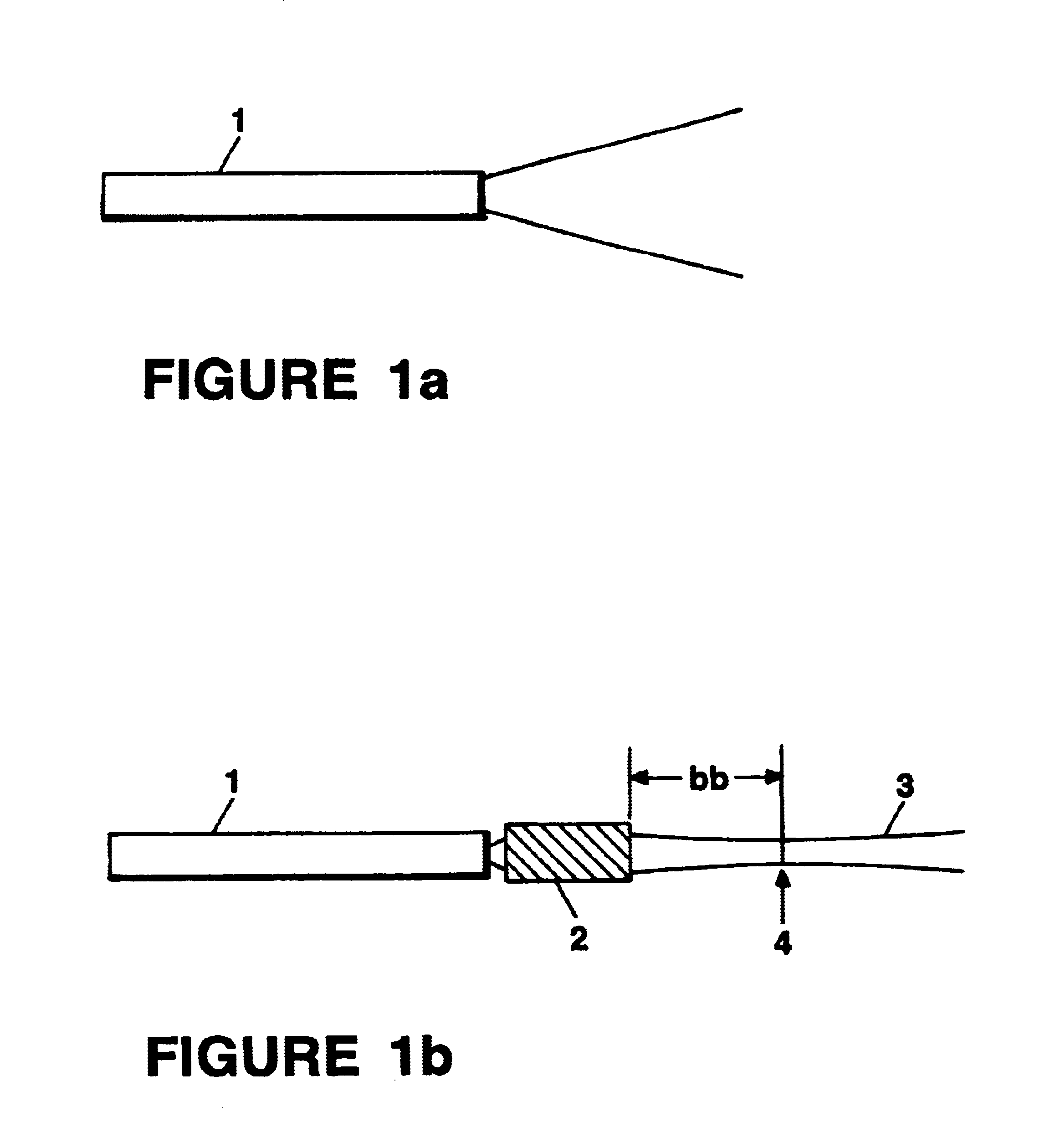Handheld laser system emitting visible and non-visible radiation
a laser system and laser beam technology, applied in the field of handheld laser systems emitting visible and non-visible radiation, can solve the problems of difficulty in directing the beam at the proper location on the target, lack of guidance as to whether the correct energy density has been delivered to the target, and insufficient method
- Summary
- Abstract
- Description
- Claims
- Application Information
AI Technical Summary
Benefits of technology
Problems solved by technology
Method used
Image
Examples
example 1
The primary components of the hand-held implementation of the present invention described in this Example are shown schematically in FIG. 5. The apparatus consists of laser diode 51, visible light sources 52, a fan-cooled finned heat sink 57, optical fibers 53 transmitting the visible light beam (nine optical fibers were actually used), optical fiber 54 transmitting the nonvisible laser beam, optical fiber connector 58 which holds optical fibers 53 and 54 in optical contact with fiber collimating lens 56, a power supply such as NiCd or Li-ion batteries 55, laser activation switch 41, manual shutter 42, display / control panel 44 and laser housing 45. Optical fiber connector 58 centers optical fiber 54 in the middle of optical fibers 53, such that the visible beams emitted from the ends of optical fibers 53 define the position of nonvisible beam 43 emitted from the end of optical fiber 54 and transmitted by collimating lens 56.
Laser diode 51 is a High Power Devices Model No. HPD1020-BU...
example 2
The apparatus described in Example 1 can be used as follows to perform the LTS procedure. An albumin-based protein solder preparation can be used as described in U.S. Pat. Nos. 5,209,776 and 5,292,362, which are incorporated by reference herein. Briefly, a pasteurized 25% human albumin solution (The New York Blood Center, Melville Biologics Division, New York, N.Y.) is lyophilized. (dehydrated) under sterile conditions to powder form (2.5 g albumin) and reconstituted in 6.0 ml sterile water (42% albumin solution). After sterile filtration through a 0.2 m pore-sized filter, 200 .mu.l aliquots of this solution are mixed with 100 .mu.l of sterile ICG dye (CardioGreen, 2.5 mg / ml, Becton-Dickinson, Cockeyville, MD) and stored at -20.degree. C. Twenty-four hours prior to use, 1 to 2 aliquots are thawed and combined with 200 .mu.l of sodium hyaluronate (Healon, 10 mg / ml, Kabi Pharmacia Ophthalmics, Monrovia, Calf.) to make a total volume of 0.5 ml / aliquot. The final solution is vortexed fo...
example 3
To quantify how much of an improvement the collimated beam provides, a laboratory experiment was performed first with the original bare fiber delivery system, and then with the collimated fiber system. Each delivery fiber was moved slowly by hand over a simulated wound for a period of two minutes. The fluctuation in power density was monitored and the comparison is plotted as shown in FIG. 8. As evident from FIG. 8, the collimated fiber system has eliminated the dependence of power density on distance from the target (as also demonstrated by FIGS. 2a to 2c). These results demonstrate convincingly that the collimated beam is a much safer and more effective method for delivering beam power.
It is anticipated that alterations within the purview of one of ordinary skill in the art will be made to the above described preferred embodiment based on technology advances, for example, in the areas of laser diodes, rechargeable batteries, microelectronics, and such changes do not affect the sco...
PUM
 Login to View More
Login to View More Abstract
Description
Claims
Application Information
 Login to View More
Login to View More - R&D
- Intellectual Property
- Life Sciences
- Materials
- Tech Scout
- Unparalleled Data Quality
- Higher Quality Content
- 60% Fewer Hallucinations
Browse by: Latest US Patents, China's latest patents, Technical Efficacy Thesaurus, Application Domain, Technology Topic, Popular Technical Reports.
© 2025 PatSnap. All rights reserved.Legal|Privacy policy|Modern Slavery Act Transparency Statement|Sitemap|About US| Contact US: help@patsnap.com



